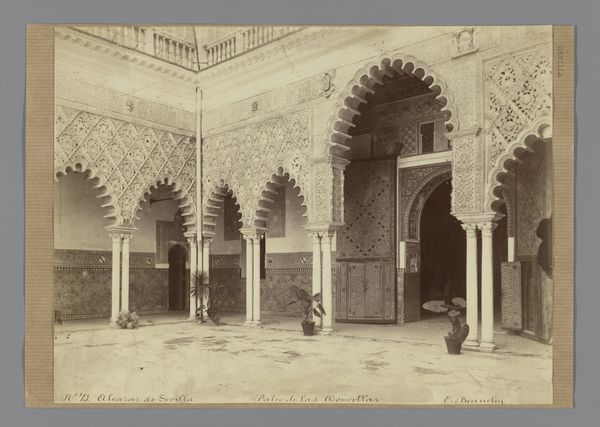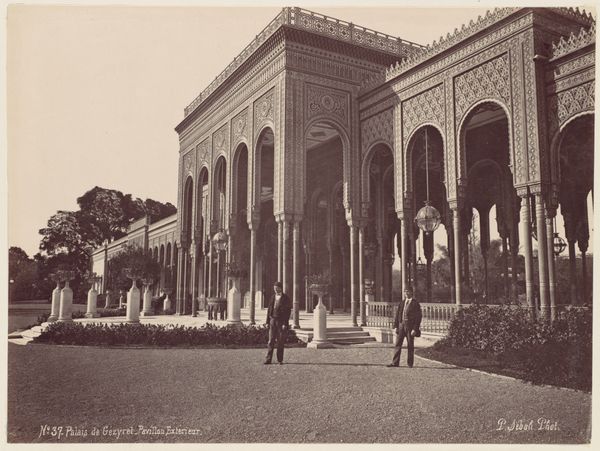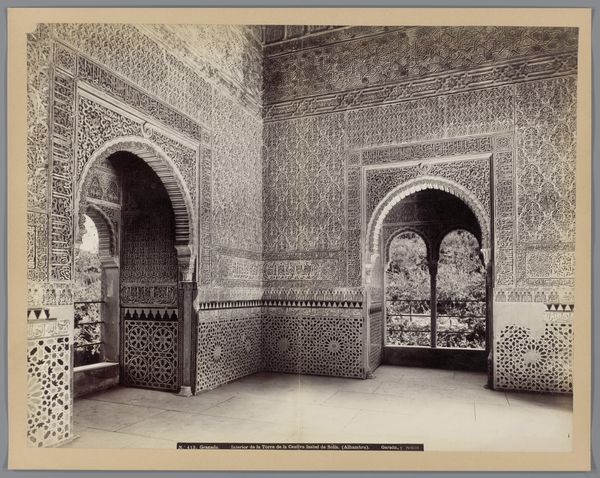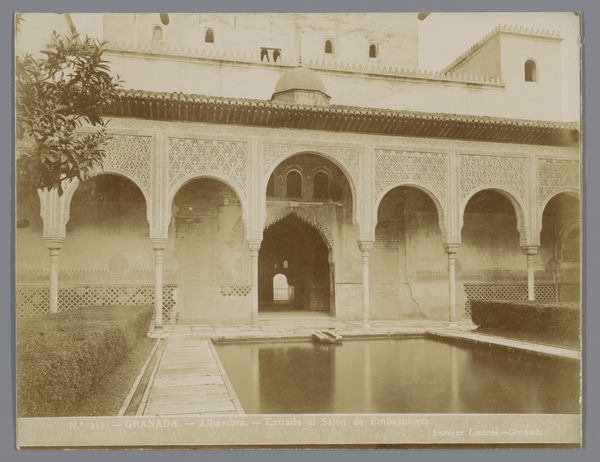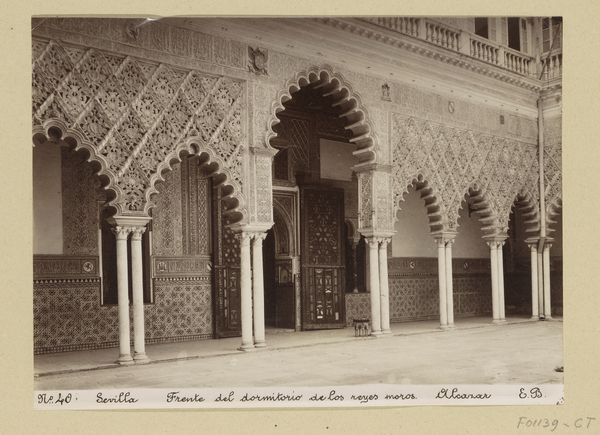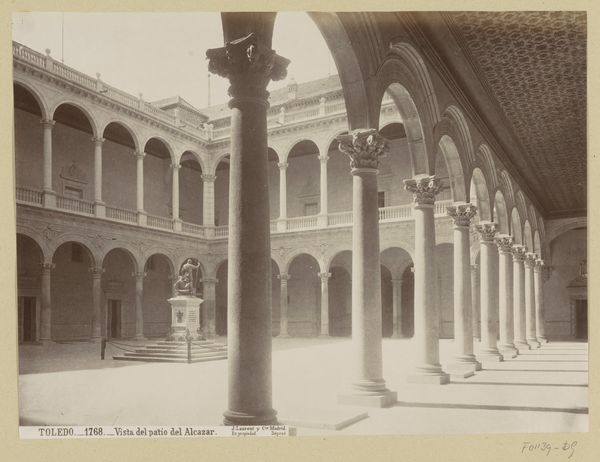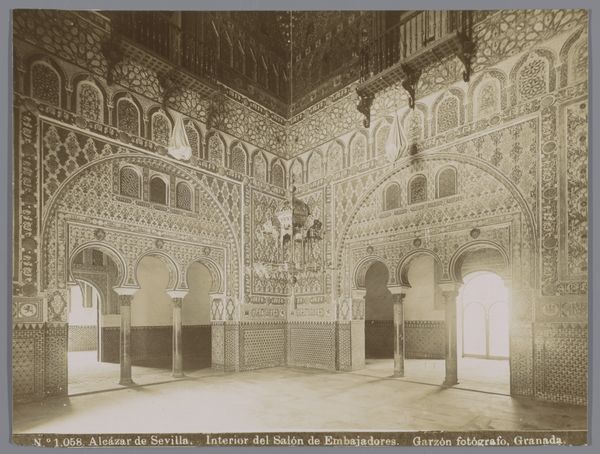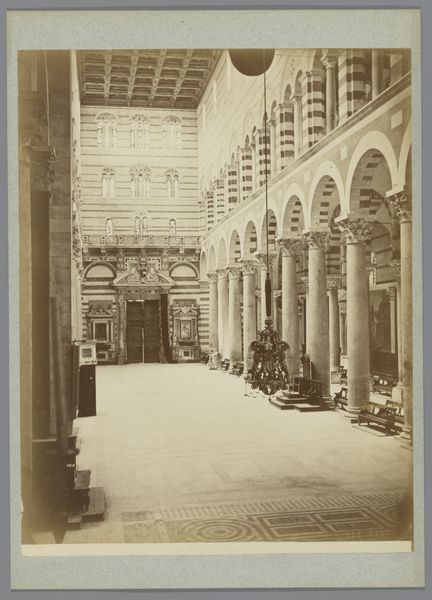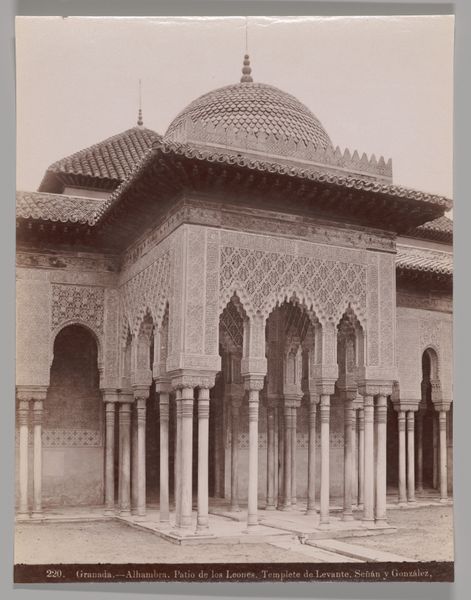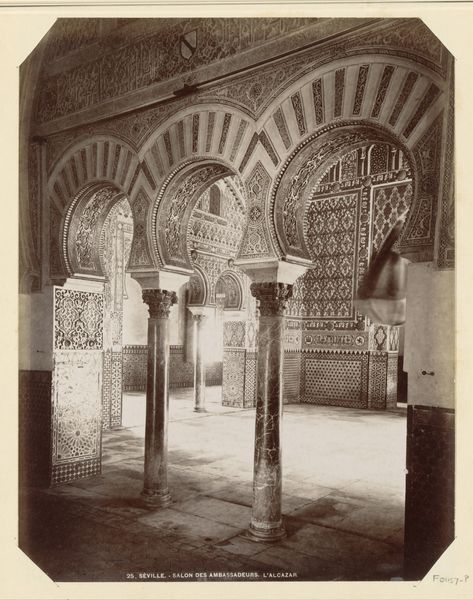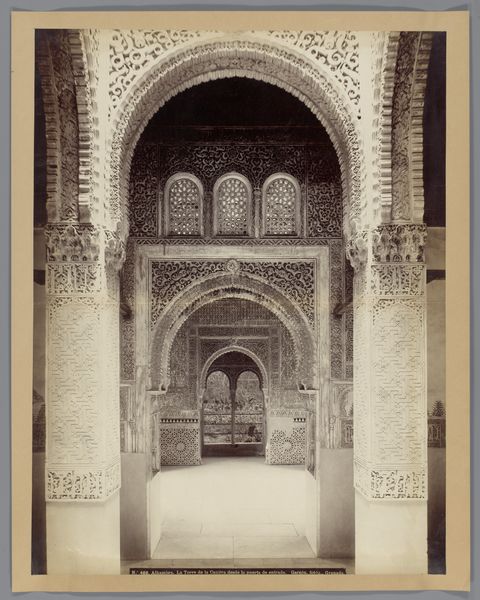
photography, architecture
#
still-life-photography
#
landscape
#
historic architecture
#
photography
#
orientalism
#
islamic-art
#
architecture
Dimensions: height 155 mm, width 204 mm
Copyright: Rijks Museum: Open Domain
Editor: This photograph, "Patio de las Doncellas in het Koninklijk Paleis van Sevilla" by Rafael Garzón, taken sometime between 1890 and 1930, showcases an exquisite courtyard. The monochromatic tones lend it an air of timeless elegance, but there’s also a sense of staged formality that strikes me. What do you see in this piece? Curator: It’s fascinating how photography, particularly at this time, could both document and construct a specific image of cultural heritage. Garzón’s work here isn't simply a neutral depiction. The ‘Patio de las Doncellas,’ historically significant for its blend of Christian and Islamic architectural styles, becomes a stage for representing Spanish identity. Notice the deliberate framing and the relatively sterile environment; it is almost devoid of human presence, furthering this idea of Spanish identity that can often erase minority groups and narratives, especially in postcolonial contexts. Editor: So, the photograph presents an idealized vision of Spanish history, potentially overlooking its complex multicultural past? Curator: Precisely. It’s worth considering who the intended audience was and what narratives were being reinforced or omitted through the image. How does presenting Islamic art and architecture this way in a “Spanish Royal Palace” solidify political messaging, particularly in the late 19th, early 20th centuries? Think about the power dynamics embedded in tourism, national identity, and photographic representation. Editor: That makes me look at the architecture and composition very differently. The image isn't just about beauty; it's a political statement. Curator: Absolutely. By recognizing photography's agency in shaping perceptions of culture and history, we begin to challenge how cultural narratives were—and continue to be—constructed and perpetuated. This really helped to contextualize photography within cultural representation. Editor: Indeed, this photograph is way more than just architecture. It holds stories of cultural narratives, and whose stories get told.
Comments
No comments
Be the first to comment and join the conversation on the ultimate creative platform.
